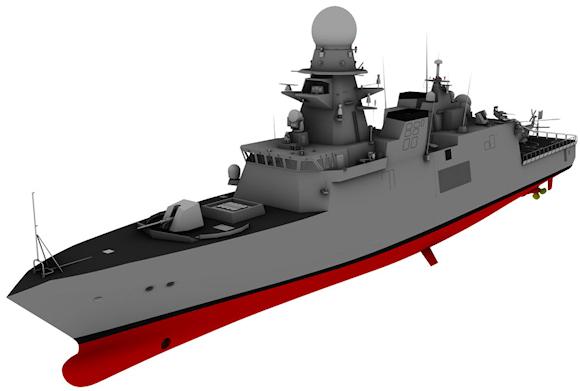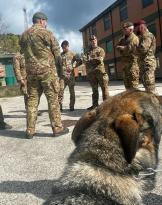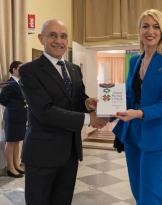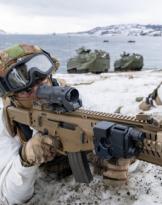The birth of a common European defense passes through Palazzo Marina. In fact, the Italian Navy is the leader of the European Patrol Corvette project, a ship designed in coordination with some of the EU Navies and which will be built by four companies from three different countries, including the Italian giant Fincantieri.
The first operational meeting between the Italian Navy, the representatives of Spain, France, Greece and Portugal, the Industrial Consortium (NAVARIS, FINCANTIERI, NAVAL GROUP, NAVANTIA) and the European Defense Agency ( AND FROM).
"The meeting was very successful and represented the first industrial engagement regarding the EPC project, from which many useful ideas emerged. This sharing of high-level requirements outside the government sphere is in fact fundamental for the continuation of the project, also in consideration that the deadline of the European tender announced by the European Defense Fund, a financial instrument of the EU Commission which, together with the PESCO projects, aims to develop the European Defense, will expire on December 9th " says commander Andrea Quondamatteo, project manager for the Navy.
This is the most important project in the naval sector in the context of the permanent structured cooperation in defense (Pesco) of the European Union. It was approved by the EU Commission on November 12, 2019. The first country to join Italy was France, followed by Greece and Spain. Portugal remains an observer for the moment, ie it participates in the meetings but reserves the right to join the project at a later time.
One common platform, 2 versions
The European corvettes will be affordable, environmentally sustainable, energy efficient and very versatile patrol vessels. They will be able to carry out maritime security and offshore police operations, they will be able to be used in the fight against terrorism and illegal trafficking, but also for anti-pollution competition activities and for emergency interventions in the event of natural disasters.
The European corvette project is a common platform, a shared base, which can be tailored to the needs of member states. The overall displacement will not exceed 3.000 tons, which will allow the ship to operate also from smaller ports. The length of the ship, to be equipped with diesel and / or electric engines, will not exceed 110 meters.
Two versions of the corvette have already been outlined. Italy and Greece agreed on the typology Full Combat Multipurpose. Spain and France, on the other hand, are interested in Long Range Multipurpose. The need of Italy and Greece is to have a patrol vessel to be used in the wider Mediterranean, with a specific focus on the central and eastern Mediterranean, for mainly presence and surveillance tasks, equipped with a variety of systems aimed at guaranteeing a adequate capacity for self-defense. While France and Spain need a ship with extended autonomy to be able to carry out activities in overseas territories.

The next steps
From an industrial point of view NAVIRIS (the joint venture created between the Italian giant FINCANTIERI and the French NAVAL GROUP) coordinated the creation of a consortium together with FINCANTIERI, NAVAL GROUP and NAVANTIA to present itself as a single entity and compete for access to European Defense Fund, with the intention of winning the competition in the tender, the terms for submitting applications will expire on 9 December.
Participating Member States aim to produce their first prototype starting in 2027.
Thanks to the support of the European Defense Agency (EDA), identified as the institutional framework for the phase of definition and harmonization of the common requirements, the necessary convergence was found to draft the first documents aimed at describing the project and its characteristics. The project arrangement is now being defined which represents an international document, with binding value, which will allow to establish the roles and terms within which the cooperation between the participating countries will take place.
"The next step involves developing the requirements in detail and seeking the consensus of the participating nations for the subsequent design phase which will mark the start of the procurement phase" says commander Quondamatteo.












